Daniel Edelman
An Evaluation of Low Overhead Time Series Preprocessing Techniques for Downstream Machine Learning
Sep 12, 2022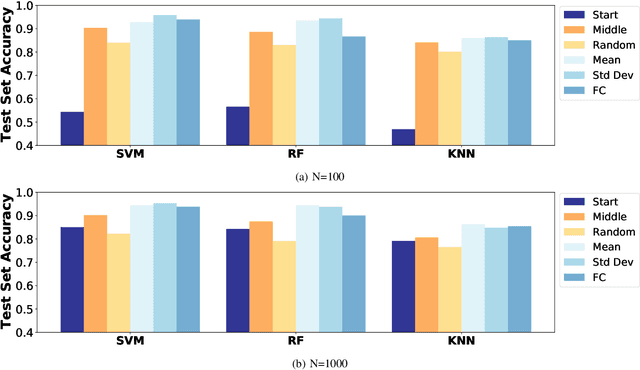
Abstract:In this paper we address the application of pre-processing techniques to multi-channel time series data with varying lengths, which we refer to as the alignment problem, for downstream machine learning. The misalignment of multi-channel time series data may occur for a variety of reasons, such as missing data, varying sampling rates, or inconsistent collection times. We consider multi-channel time series data collected from the MIT SuperCloud High Performance Computing (HPC) center, where different job start times and varying run times of HPC jobs result in misaligned data. This misalignment makes it challenging to build AI/ML approaches for tasks such as compute workload classification. Building on previous supervised classification work with the MIT SuperCloud Dataset, we address the alignment problem via three broad, low overhead approaches: sampling a fixed subset from a full time series, performing summary statistics on a full time series, and sampling a subset of coefficients from time series mapped to the frequency domain. Our best performing models achieve a classification accuracy greater than 95%, outperforming previous approaches to multi-channel time series classification with the MIT SuperCloud Dataset by 5%. These results indicate our low overhead approaches to solving the alignment problem, in conjunction with standard machine learning techniques, are able to achieve high levels of classification accuracy, and serve as a baseline for future approaches to addressing the alignment problem, such as kernel methods.
The MIT Supercloud Workload Classification Challenge
Apr 13, 2022
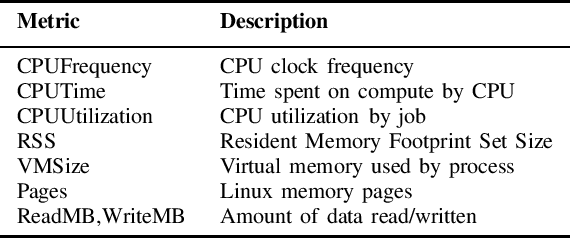
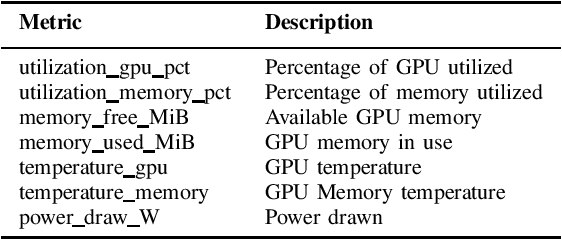
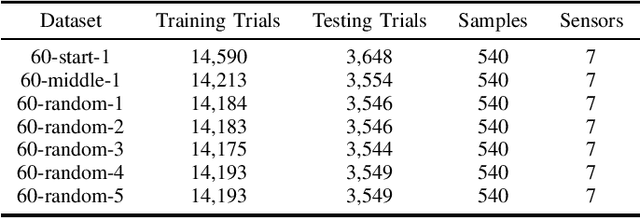
Abstract:High-Performance Computing (HPC) centers and cloud providers support an increasingly diverse set of applications on heterogenous hardware. As Artificial Intelligence (AI) and Machine Learning (ML) workloads have become an increasingly larger share of the compute workloads, new approaches to optimized resource usage, allocation, and deployment of new AI frameworks are needed. By identifying compute workloads and their utilization characteristics, HPC systems may be able to better match available resources with the application demand. By leveraging datacenter instrumentation, it may be possible to develop AI-based approaches that can identify workloads and provide feedback to researchers and datacenter operators for improving operational efficiency. To enable this research, we released the MIT Supercloud Dataset, which provides detailed monitoring logs from the MIT Supercloud cluster. This dataset includes CPU and GPU usage by jobs, memory usage, and file system logs. In this paper, we present a workload classification challenge based on this dataset. We introduce a labelled dataset that can be used to develop new approaches to workload classification and present initial results based on existing approaches. The goal of this challenge is to foster algorithmic innovations in the analysis of compute workloads that can achieve higher accuracy than existing methods. Data and code will be made publicly available via the Datacenter Challenge website : https://dcc.mit.edu.
The MIT Supercloud Dataset
Aug 04, 2021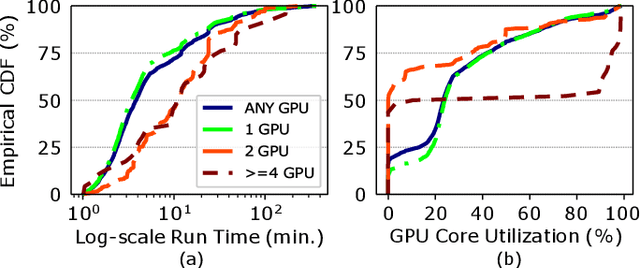
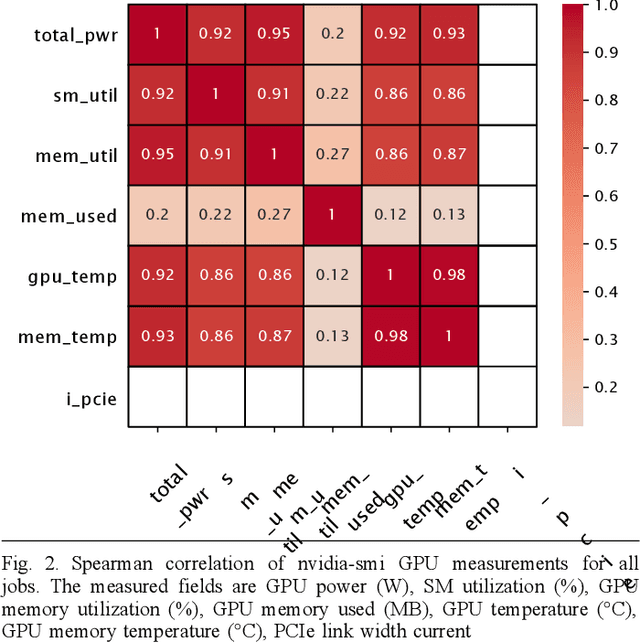
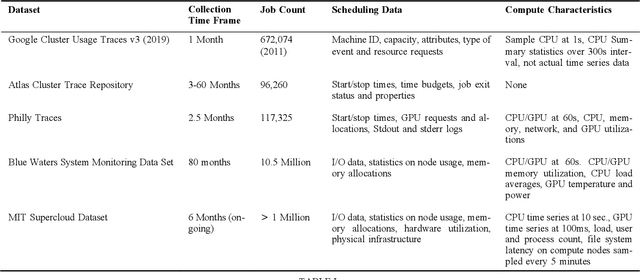

Abstract:Artificial intelligence (AI) and Machine learning (ML) workloads are an increasingly larger share of the compute workloads in traditional High-Performance Computing (HPC) centers and commercial cloud systems. This has led to changes in deployment approaches of HPC clusters and the commercial cloud, as well as a new focus on approaches to optimized resource usage, allocations and deployment of new AI frame- works, and capabilities such as Jupyter notebooks to enable rapid prototyping and deployment. With these changes, there is a need to better understand cluster/datacenter operations with the goal of developing improved scheduling policies, identifying inefficiencies in resource utilization, energy/power consumption, failure prediction, and identifying policy violations. In this paper we introduce the MIT Supercloud Dataset which aims to foster innovative AI/ML approaches to the analysis of large scale HPC and datacenter/cloud operations. We provide detailed monitoring logs from the MIT Supercloud system, which include CPU and GPU usage by jobs, memory usage, file system logs, and physical monitoring data. This paper discusses the details of the dataset, collection methodology, data availability, and discusses potential challenge problems being developed using this data. Datasets and future challenge announcements will be available via https://dcc.mit.edu.
 Add to Chrome
Add to Chrome Add to Firefox
Add to Firefox Add to Edge
Add to Edge